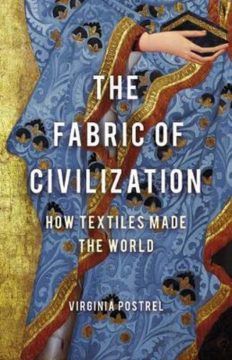Virginia Postrel with an excerpt from her book The Fabric of Civilization, in Reason:
 Anyone who has been a teenager or dressed a 4-year-old knows that what we wear can be a source of intense conflict. Clothing is more than essential protection against the elements. It helps define who we are—to the world and to ourselves. And it is an everyday source of aesthetic pleasure. Clothing is a form of self-expression.
Anyone who has been a teenager or dressed a 4-year-old knows that what we wear can be a source of intense conflict. Clothing is more than essential protection against the elements. It helps define who we are—to the world and to ourselves. And it is an everyday source of aesthetic pleasure. Clothing is a form of self-expression.
For most of human history, most people simply couldn’t afford choice in clothing. Cloth was too expensive. But there were exceptions, particularly in the thriving commercial cities of Europe and Asia in the Middle Ages, much of whose prosperity was itself derived from the textile trade. Peasants might still have to stick to basics, but merchants and the artisans who served them could afford more. With commercial prosperity came choice, and with it an unsettling social dynamism that expressed itself in clothing.
In response, rulers adopted sumptuary codes that restricted what people could wear. The exact nature of those codes varied with the local culture—and so did the ways in which consumers resisted. Because they almost always did.
More here.
